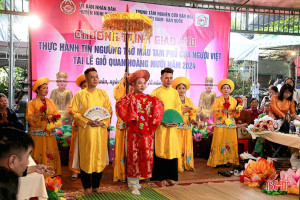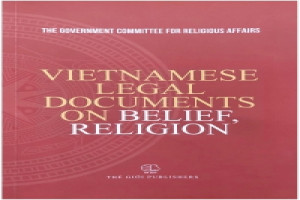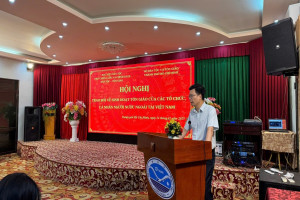
A Buddhist stupa has emerged in the middle of the Mekong River, which demarcates the border between Thailand and Laos, in the Thai province of Nong Khai. Known as the Phra That Klang Nam stupa, the monument is estimated to be more than 700 years old. Originally built on the bank of the river, the stupa toppled into the Mekong in 1847 and has since been under water.

From thethaiger.com
According to the traditional Buddhist chronicle Urangkhathat (Phrathat Phanom), which provides a history of the shrine and the relics within, foot-bone relics of the Buddha are enshrined in the stupa.
In recent days, water levels along the river have receded sharply due to an ongoing drought in the region. Tourists have gathered along the river bank in Nong Kai to take in the novel sight.
Others have taken to the water on boats for a closer look. Some on boats touched the stupa while others placed golden fabric over it. However, the low water levels have made navigating the river dangerous in places—some sections are no more than a meter deep—and officials have urged boat operators to be cautious.

From inquirer.net
One local boat navigator, Rapin Butsen, told reporters that a large number of tourists had come to area in recent days and that there were many boats available to bring people to the stupa.
According to the Tourism Authority of Thailand, an underwater archeological survey of the stupa revealed that it is 17.2 meters wide and 28.5 meters tall. The structure is broken into three pieces and continues to be eroded by the flow of water around it.
The stupa has been so highly revered by local residents that they have built a replica of the stupa, which is believed to contain the Buddhist relics from the original stupa. There, local residents hold several rituals each year.
Three years ago, a major drought revealed the remains of a Buddhist temple in central Thailand.* That temple, Wat Nong Bua Yai, in Lopburi Province, had been submerged for only around 20 years after the construction of a dam. As the reservoir’s water level fell, the temple, including a nearly intact stone Buddha statue, were left on dry land once again, drawing tourists and pilgrims from nearby areas.
As holy sites containing relics of the Buddha or similar highly important objects, stupas are key places for religious and community gatherings. Many Thais visit stupas on Buddhist holidays, passing on this tradition down the generations. According to the Office of National Buddhism, there are 40,717 Buddhist monasteries (called wats) in Thailand, most of which have a stupa nearby or within their grounds.
Thailand is a predominantly Theravada Buddhist country, with 94.5 per cent of the population identifying as Buddhists, according to 2015 census data. Islam and Christianity make up the two largest minority religions, with 4.29 per cent and 1.17 per cent of the population respectively.
On March 14, 1988, 64 naval soldiers of Vietnam fell down while standing in a circle defending the national flag planted on Gac Ma Reef and affirming the country’s sea and island sovereignty.
Their brave deaths were honoured with a monument named “Nhung nguoi nam lai phia chan troi” (Those who laid down their lives on the horizon) at the Gac Ma soldier memorial site./.
Source: buddhistdoor.net/Justin Whitaker




